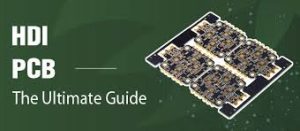high density interconnects bend in both directions
High density interconnect, or HDI, is a technology that allows more complex circuitry to fit onto a PCB. It reduces manual routing time and allows for more connections to be made on the board without sacrificing performance. It also helps with component placement, making it easier to design state-of-the-art electronic devices.
These PCBs have become increasingly popular because of their ability to hold more components on a smaller surface area. As a result, they are used in many different industries, including automotive, medical, and computing. They are particularly important in the electronics industry, where space is at a premium and more advanced technologies need to be packed into small, lightweight packages.
Currently, the largest end-user for these PCBs is the smartphone market. These devices are becoming increasingly sophisticated and need to be tightly packed with miniaturized components, 2.5-D and 3-D semiconductor packages, and intricate circuitry. high density interconnect PCBs are also used in a variety of other electronic devices, such as tablets and laptops.

Can high density interconnects bend in both directions?
To be able to bend in both directions, the PCB must have the right kind of metallization and layer structure. It must have a thicker copper plating with the proper type of dielectric material. This combination will allow the bending to be done without losing conductivity. This is not an easy task, but it’s possible with the right tools.
The first step is to design the PCB’s conductive patterns. Then, the layers are etched and the copper is plated. Once the etching and plating are complete, the layers are laminated together. The resulting PCB will have the desired bending capability and a higher density of interconnects.
This process is a lengthy one, but it’s well worth the effort. By using a high-density interconnect PCB, you can save valuable space on your device and avoid the expensive cost of replacing it with a new model.
Moreover, you can also reduce the size of the board and its overall weight. This is especially beneficial for mobile devices, as it makes them more portable and convenient to carry around. In addition, a high-density PCB can improve the reliability of your device by reducing the risk of short circuits and other electrical defects.
The HDI PCB has also been shown to have superior mechanical properties when compared to rectangular interconnects. These results were achieved through COMSOL simulations that analyzed the deformation and wedge-shock behavior of two different interconnect cross sections. The U-shaped interconnect was able to endure much greater wedge-shock loads than the rectangular cross section, and had significantly lower hysteresis and resistance variation upon compression. This is a significant improvement over conventional rectangular LM interconnects, which are prone to deformation and advancing wedge-shock during lithography. This demonstrates that a U-shaped LM cross section is a promising design alternative for high-performance PCBs that need to withstand shock loads.
